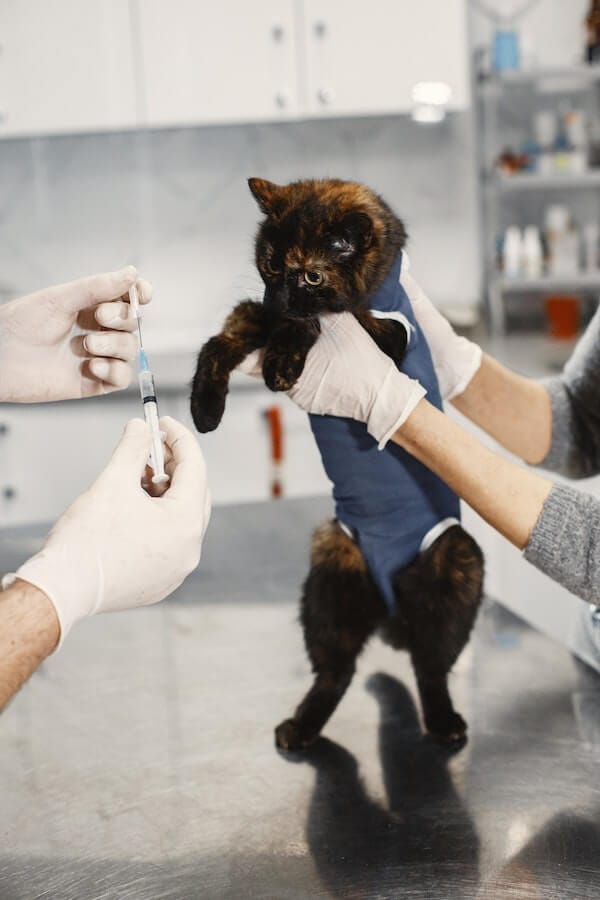
Cats are notorious for their love of mischief, but sometimes that curiosity can lead to an unwelcome surprise – an abscess! What can you do next and how to treat cat abscess at home?
With the proper care and treatment, you can take care of a cat abscess at home.
This article will provide guidance on how to treat a cat abscess. We’ll discuss what causes them, how to spot the signs, and how you can help your kitty get back to their mischievous self in no time!
So read on and prepare yourself for the road ahead! Now let’s purr-suade this problem together.
What causes a cat to get an abscess?
An abscess is an infection caused by bacteria, such as Staphylococcus or Streptococcus, that results in a large pocket of pus and tissue swelling. Cats can be prone to these infections due to their active lifestyles as outdoor cats. Here are three primary causes of cat abscesses:
1) Bites from other animals:
Cat fights with other neighborhood cats can result in broken skin which can become infected with the bacteria mentioned previously.
2) Improper grooming:
Kitties who don’t groom themselves often enough are more likely to develop problems like mats or tangles in their fur which might cause skin irritation and lead to an abscess.
3) Poor hygiene:
Cats who live in unclean environments are more prone to an abscess since bacteria can accumulate on their fur or skin which leads to infection.

Signs of cat abscess
If your cat has an abscess, you may notice some signs that it is causing them discomfort. Some of these include:
1) Swelling
There might be swelling or the formation of a lump in the area where the infection is located.
This swelling can be quite painful for your pet and will likely cause them to become more lethargic than usual.
2) Discharge from the abscess
this discharge could be either purulent (i.e., containing pus), serosanguinous (blood-tinged fluid), or even both!
It’s important to note that if left untreated, this discharge can spread further infection elsewhere on your pet’s body.
3) Discomfort
Your pet may also display behavioral signs of pain or discomfort, such as becoming more aggressive than usual, hiding away from people and other animals, not wanting to be touched or handled, and losing their appetite.

How to Treat Cat Abscess at Home
If you’ve noticed your cat has a lump on their body and they seem uncomfortable, it’s important to get them to the vet as soon as possible.
It’s likely that they have an abscess, which often requires medical attention and antibiotics.
However, if you’re unable to visit a veterinarian immediately, there are a few steps you can take at home to help treat your cat’s abscess until professional help is available.
Here are five ways for how to treat cat abscess at home:
1. Clean the wound
Gently clean the wound with warm water and mild soap or saline solution and use cotton swabs or gauze pads lightly coated in hydrogen peroxide (a 3% solution) to clean out any pus or debris.
After cleaning, make sure to apply an antibiotic ointment to the wound.
2. Compress the area
Apply a cold compress or ice pack in order to reduce swelling and pain around the abscess. Place it over the affected area for 10-15 minutes at a time several times throughout the day.
3. Provide your cat with warm water
It’s important that your cat stays hydrated while they deal with their abscess. Fill up a shallow bowl with warm water and place it near their bedding so they can drink as needed.
4. Give them food
Offer your cat soft, canned food during this time since it will be easier for them to eat without putting strain on their jaw muscles or teeth.
5. Monitor your cat’s progress
Pay close attention to the wound and look for signs of infection like redness or swelling. If the abscess doesn’t seem to be improving, contact your veterinarian right away.

Conclusion
It’s important to remember that a cat abscess is a serious condition and should be taken care of as soon as possible by a trained professional.
However, using these five methods can help you provide your pet with relief until you’re able to get them to the vet. Good luck!


GIPHY App Key not set. Please check settings